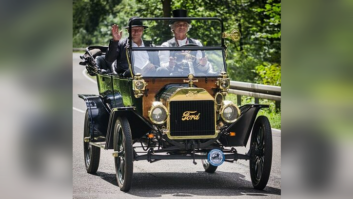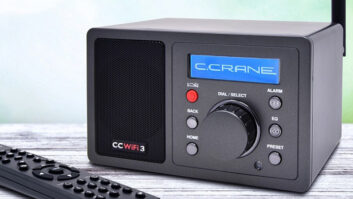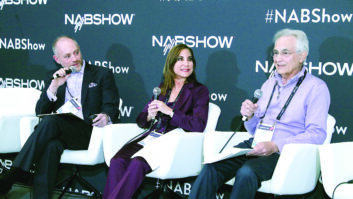
The HD Radio website displays the Insignia NS-HD01A.
(Click to Enlarge)
Every station that is running HD Radio should own a good broadcast monitor that allows them to carefully and accurately adjust their processing and analog delay. But how can you get a sense of the actual coverage and sound that is ultimately delivered to the listeners?
In the last few years, mobile radios for the car have been easy to find and work well. This is getting easier every year as more automobile manufacturers add HD Radio to their standard electronics lineup in the car. With a car radio capable of HD reception, you can drive through your market area and learn firsthand the actual coverage area, which is important to know when someone asks you whether they should be trying out an HD Radio receiver. Coverage is critical especially when it comes to HD2 channels, which will mute in weak signal areas.
However, there’s still a third type of monitor that every station engineer should have if they are responsible for an HD Radio signal. That third type is the small indoor portable radio. A surprising number of listeners, or potential advertising clients, still want to test reception on an indoor device. A good choice for this kind of radio is the recently released Insignia NS-HD01A. These list for about $50, but you can usually find them online for something less than that.
I remember buying one of the initial run of these small portables, and it was somewhat disappointing. One of the great benefits of HD Radio is the improvement offered in urban environments; multipath distortion is virtually eliminated. But the original portable from Insignia had a front end that would overload too easily, which meant that it didn’t work near transmitter sites in urban centers, as in Boston or New York for example. It also wasn’t all that sensitive. To get reception, you pretty much had to be outdoors for the headphone cord-based antenna to work.
On the latest version these problems have been largely fixed. Not only did it work inside my house, it held HD signals as I moved from room to room. It even worked well in my personal car, which is not HD Radio equipped, delivering seamless reception of station signals in the downtown Boston area from a transmitter site about 7 miles out of town. This is with the radio clipped to the sun visor and the headphone cord hanging down, inside the car, with windows shut.
Insignia also updated the display to be brighter and improved the battery life on this model. It will run about 10 hours on a full charge, or more if you aren’t constantly changing stations as I do during tests (the display lights up when changing channels but mutes to dark once you have a station locked in to save energy).
These radios perform well, deliver good reception and are not expensive to boot. It’s an easy way to hear what you can do with an HD Radio system in the home and outdoors on the move.
Michael LeClair is chief engineer for radio stations WBUR(AM/FM) in Boston; he has been technical editor of Radio World Engineering Extra since its inception in 2005.
Send your HD Radio tips or column suggestions to [email protected].







